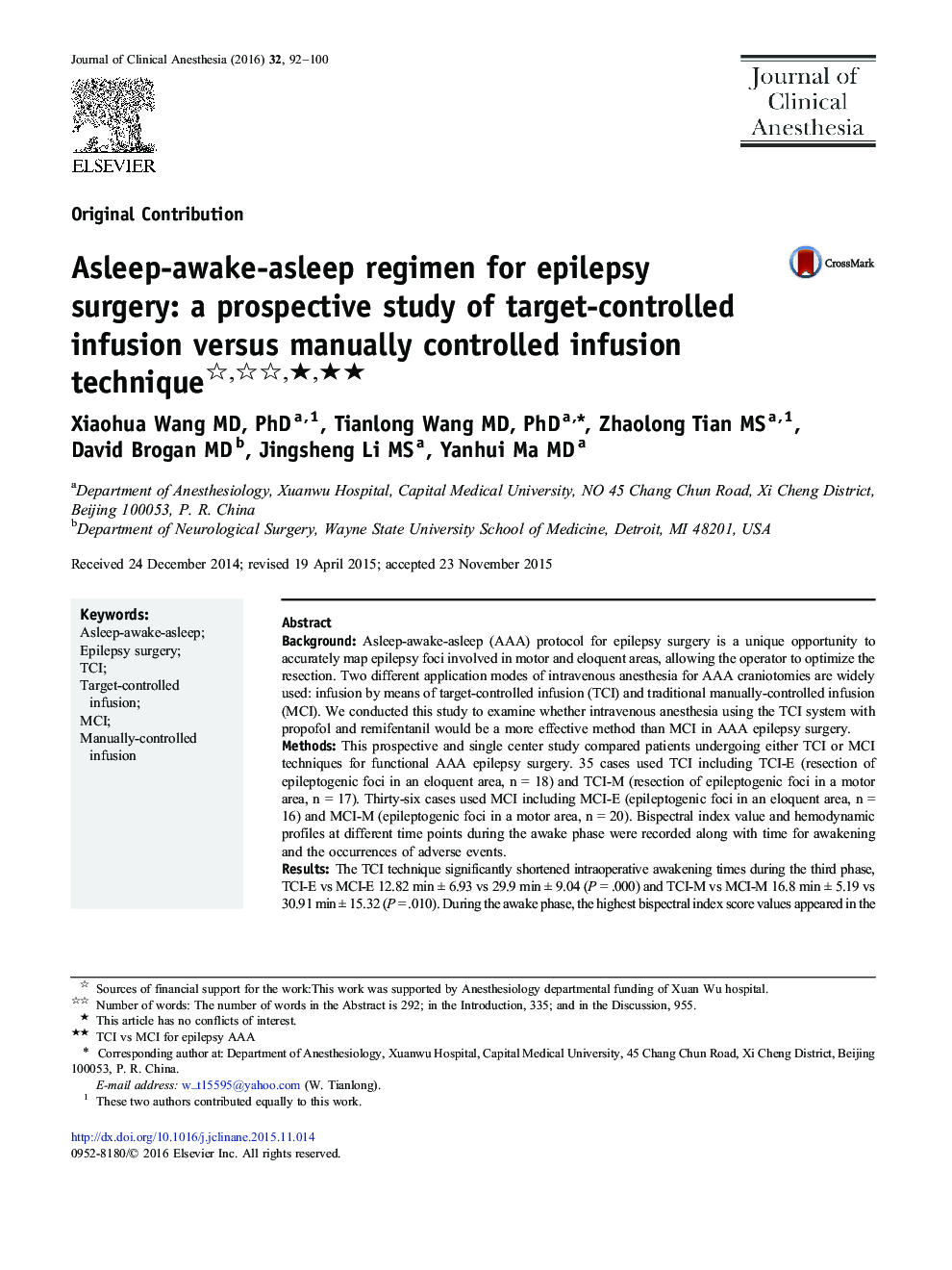| کد مقاله | کد نشریه | سال انتشار | مقاله انگلیسی | نسخه تمام متن |
|---|---|---|---|---|
| 5884784 | 1567658 | 2016 | 9 صفحه PDF | دانلود رایگان |

- We report the superiority of TCI, which is faster intraoperative awakening for AAA epilepsy surgery.
- We reveal, for the first time, that TCI provides better hemodynamics along with secure airway management conditions for AAA epilepsy surgery.
- We found that the TCI group had the higher bispectral index score value than the MCI group during the awake phase.
- Without more occurrences of adverse events, the TCI technique may be a feasible and effective technique and it might be a viable replacement of the MCI technique for AAA epilepsy surgery.
BackgroundAsleep-awake-asleep (AAA) protocol for epilepsy surgery is a unique opportunity to accurately map epilepsy foci involved in motor and eloquent areas, allowing the operator to optimize the resection. Two different application modes of intravenous anesthesia for AAA craniotomies are widely used: infusion by means of target-controlled infusion (TCI) and traditional manually-controlled infusion (MCI). We conducted this study to examine whether intravenous anesthesia using the TCI system with propofol and remifentanil would be a more effective method than MCI in AAA epilepsy surgery.MethodsThis prospective and single center study compared patients undergoing either TCI or MCI techniques for functional AAA epilepsy surgery. 35 cases used TCI including TCI-E (resection of epileptogenic foci in an eloquent area, n = 18) and TCI-M (resection of epileptogenic foci in a motor area, n = 17). Thirty-six cases used MCI including MCI-E (epileptogenic foci in an eloquent area, n = 16) and MCI-M (epileptogenic foci in a motor area, n = 20). Bispectral index value and hemodynamic profiles at different time points during the awake phase were recorded along with time for awakening and the occurrences of adverse events.ResultsThe TCI technique significantly shortened intraoperative awakening times during the third phase, TCI-E vs MCI-E 12.82 min ± 6.93 vs 29.9 min ± 9.04 (P = .000) and TCI-M vs MCI-M 16.8 min ± 5.19 vs 30.91 min ± 15.32 (P = .010). During the awake phase, the highest bispectral index score values appeared in the TCI-E group at all-time points. Mean arterial pressure and heart rate were more stable in the TCI-E group compared with the MCI-E group during the awake phase. Tachycardia and hypertension were most common in the MCI-E group (52.9% and 29.4%, P = .001 and P = .064).ConclusionWe found the superiority of TCI, which is faster intraoperative awakening and better hemodynamics along with secure airway management conditions. It is suggested that the TCI technique may be a feasible and effective technique and it might be a viable replacement of the MCI technique for AAA epilepsy surgery.
Journal: Journal of Clinical Anesthesia - Volume 32, August 2016, Pages 92-100